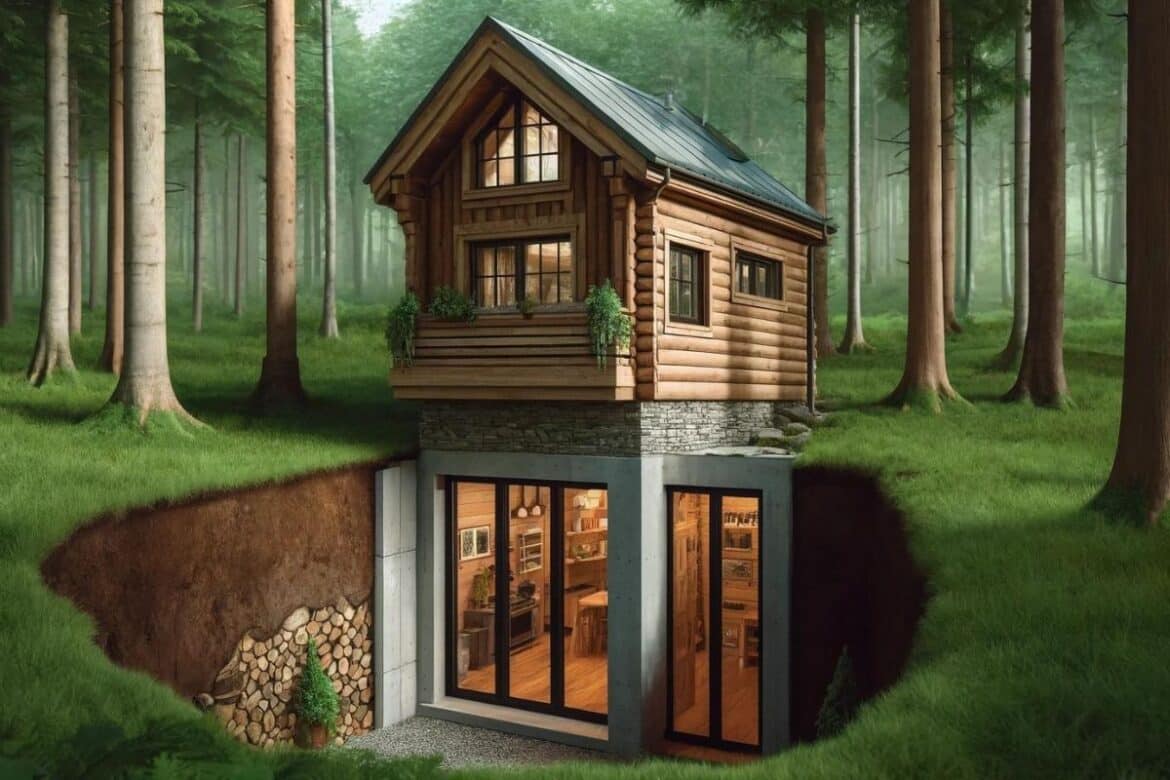In a time where moderation and maintainability are foremost, the charm of residing in a tiny house has enthralled quite a large number. Consolidating this pattern with the provincial appeal of a cabin and the special reward of a daylight basement makes a living space that isn’t just productive and conservative yet in addition significantly associated with the common habitat. The idea of cabin style tiny houses with daylight basement is something beyond a design pattern; a lifestyle decision offers an interesting mix of comfort, usefulness, and collaboration with the environmental elements.
The Structural Plan of Cabin Style Tiny Houses
The structural plan of cabin style tiny houses is a demonstration of the brilliant utilization of room and normal materials that describe this special type of lodging. These designs frequently highlight a minimal impression that mixes consistently with open air conditions, commonly involving wood as the essential material to stress a provincial tasteful that supplements the wild.
One of the vital elements of these homes is the mix of enormous windows and glass entryways, which welcome a wealth of regular light as well as proposition broad perspectives on the encompassing scene. The utilization of a daylight basement is especially creative in tiny houses, as it increments residing space without growing the structure’s impression. This lower floor is to some extent lowered, with one side against the earth and the other open to daylight, frequently driving straightforwardly to outside spaces.
This design style isn’t just about magnificence and light; it’s likewise profoundly practical. The daylight basement can fill numerous needs: as a visitor room, work space, or a parlor region, which boosts the utility of each and every square inch of the house. This plan approach tends to one of the significant difficulties of tiny house residing – the productive utilization of room – while guaranteeing the home remaining parts open, breezy, and associated with nature.
Benefits of a Daylight Basement in Tiny Homes
Incorporating a daylight basement into a tiny home brings various advantages, both pragmatic and tasteful. It, first and foremost, essentially builds the accessible residing region without changing the impression of the house, which is especially important in tiny homes where space is at a higher cost than expected. This extra level gives adaptability in plan and use, offering disconnected spaces for protection or specific exercises like leisure activities, exercises, or remote work.
Ecologically, the daylight basement is worthwhile as it uses the world’s normal protection properties. The ground encompassing the basement gives warm mass, settling the inside temperature over time. This regular protection brings about more proficient warming and cooling, decreasing energy utilization and expenses, and adding to the home’s general manageability.
Besides, the presence of normal light lessens the requirement for counterfeit lighting during the day, which saves energy as well as improves the prosperity of inhabitants. Regular light has been displayed to further develop state of mind and efficiency, making the daylight basement a better living or working space.
Challenges and Considerations
While there are many advantages to this kind of engineering, planning and building a cabin style tiny house with a daylight basement accompanies its own arrangement of difficulties. One significant thought is the territory of the structure site. Daylight basements require an incline where one side of the basement can be presented to the outside, so level land can be an impediment.
Also, water the executives is significant in homes with daylight basements to forestall dampness issues that can prompt shape and buildup. Appropriate seepage and waterproofing measures should be executed to safeguard the respectability of the construction and the soundness of its occupants. This could incorporate introducing French channels, applying waterproof coatings, and cautious site intending to redirect water from the establishment.
Another thought is the nearby building regulations and drafting guidelines, which can fluctuate broadly and may limit the development of tiny houses, especially those with special elements like a daylight basement. Imminent manufacturers ought to completely explore and conform to neighborhood guidelines to guarantee their new home meets generally legitimate prerequisites.
Lifestyle Advantages of Residing in a Tiny House with a Daylight Basement
Deciding to reside in a cabin style tiny house with a daylight basement isn’t just about cutting back or sticking to building patterns; about embracing a lifestyle values straightforwardness, productivity, and closeness to nature. This residing game plan empowers a moderate lifestyle, diminishing mess and the ecological effect of bigger homes, while as yet giving more than adequate space and usefulness.
Occupants of these homes frequently experience a more noteworthy feeling of local area and connectedness with their current circumstance, whether through coordinated open air residing spaces, local area gardens, or just the all encompassing perspectives given by their home’s plan. The minimized size supports a more dynamic lifestyle, with less time spent on upkeep and more on open air exercises and side interests.
Cabin style tiny houses with daylight basements address an agreeable mix of structure, capability, and supportability. They offer a commonsense answer for those hoping to limit their impression and live more straightforwardly with nature, without forfeiting solace or style. By figuring out the plan standards, advantages, and contemplations of these homes, people can settle on informed conclusions about whether this creative way to deal with tiny house residing is appropriate for them.


COMMENTS ARE OFF THIS POST